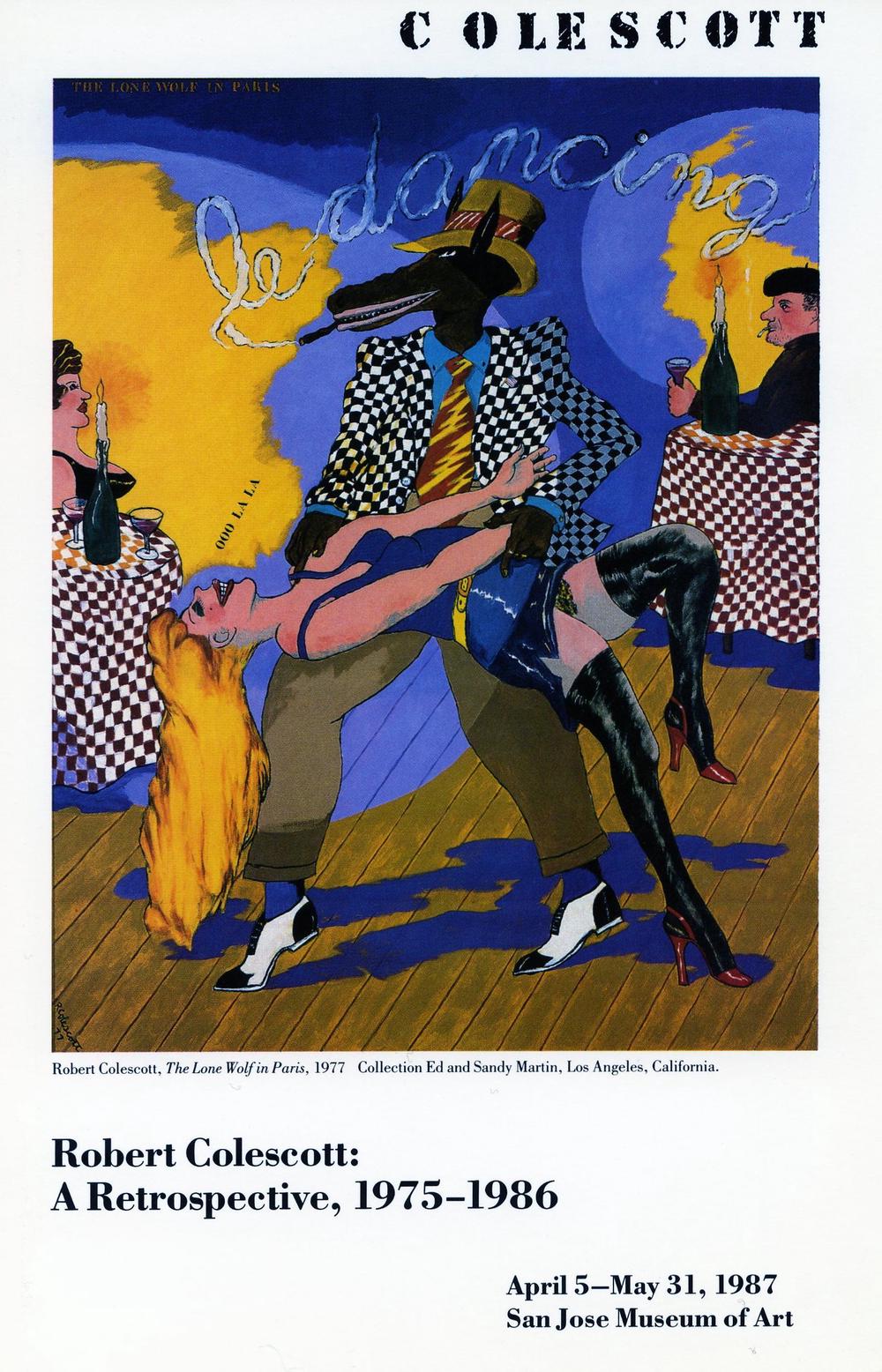Robert Colescott. Counternarrative Daggers
The San José Museum of Art organized the first major retrospective of Robert Colescott’s paintings in 1987. Curated by Lowery Stokes Sims, who was then Associate Curator of Twentieth-Century Art at the Metropolitan Museum of Art, New York, Robert Colescott: A Retrospective, 1975–1986 highlighted the irony and humor of his increasingly expressive style. Beginning in 1975 Colescott appropriated Western art history paintings with the primary objective of putting Black people into art history,1 as in his remake of Emanuel Leutze’s 1851 history painting of George Washington leading troops across the Delaware River. In George Washington Carver Crossing the Delaware: Page from an American History Textbook (1975), Carver, the famous African American scientist, takes the place of the Revolutionary War general, his troops a raucous boat full of Jim Crow–era stereotypes of African Americans—barefoot buffoons, mammies, cooks, and a banjo player.2 With a sharp edge Colescott used token representations and minstrel-like caricatures, the very images of Blackness created by white culture, to turn appropriation on its head: “the reformulated art object serves as a code by which society reveals itself.”3
Lowery Stokes Sims, “Robert Colescott: 1975–1986,” in Robert Colescott: A Retrospective (San José, CA: San José Museum of Art, 1987), 2. ↩︎
Lowery Stokes Sims, “Bob Colescott Ain’t Just Misbehavin’,” Artforum, March 1984, 57. ↩︎
Mitchell D. Kahan, “Robert Colescott: Pride and Prejudice,” in Robert Colescott: A Retrospective (San José, CA: San José Museum of Art, 1987), 25. ↩︎
